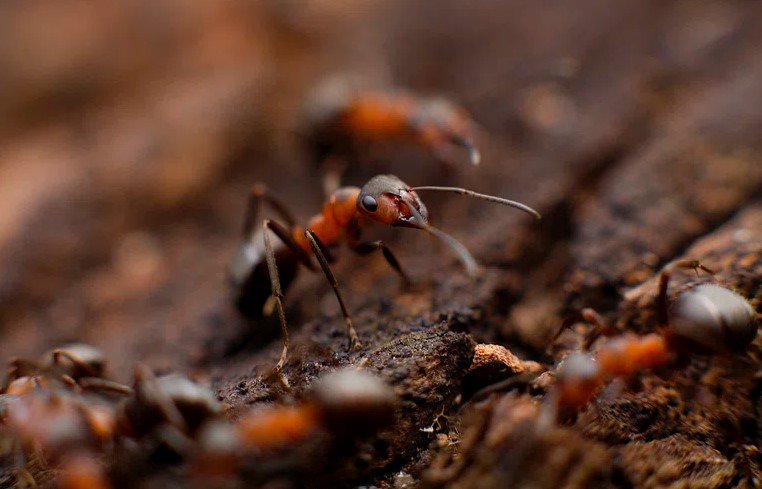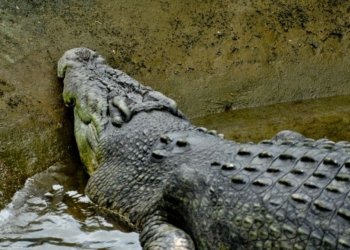Ants are among the most fascinating and diverse insects on the planet. They live in complex societies, communicate with each other, and perform amazing feats of cooperation and coordination. But do they have brains? How do they think and process information? In this article, we will explore the anatomy, behavior, and intelligence of ants, and reveal some surprising facts about these tiny creatures.
The answer to the question “Does ants have brain?” is yes, but not in the way you might expect. Ants do have a central nervous system, which consists of a nerve cord that runs along the length of their body, and a small cluster of nerve cells called the brain, located in their head. However, the ant brain is very different from the human brain, both in size and structure.
Does Ant Have Brain? Overview of Ants Brain
The ant brain is much smaller than the human brain, weighing only about 0.01 milligrams, compared to about 1.4 kilograms for the human brain. The ant brain is also simpler than the human brain, having fewer neurons and connections. The ant brain has about 250,000 neurons, while the human brain has about 86 billion neurons.
The ant brain is mainly responsible for processing sensory information, such as smell, taste, touch, and vision, and controlling basic movements and reflexes. The ant brain does not have the same regions and functions as the human brain, such as memory, learning, emotion, and reasoning.
How Do Ants Think and Communicate?
If ants do not have a complex brain, how do they think and communicate? The answer is that ants rely more on their collective intelligence, rather than their individual intelligence.
- Ants are social insects, meaning that they live in large groups called colonies, and cooperate with each other to achieve common goals.
- Ants communicate with each other using chemical signals called pheromones, which they produce and release from their glands.
- Ants can detect and interpret these pheromones using their antennae, which are their main sensory organs.
- Ants use pheromones to convey different messages, such as alarm, danger, food, direction, and identity.
For example, when an ant finds a food source, it will leave a trail of pheromones along the way, which other ants can follow and join. When an ant senses a threat, it will emit an alarm pheromone, which will alert and attract other ants to defend the colony.

Abilities of Ants
Despite their small and simple brains, ants have some amazing abilities that demonstrate their intelligence and adaptability. Ants can learn from their experiences, remember their routes, solve problems, and make decisions. Here are some examples of the remarkable abilities of ants:
- Ants can navigate and orient themselves using various cues, such as the sun, the earth’s magnetic field, landmarks, and their own pheromone trails.
- Ants can also estimate distances and angles, and use a mental map to find their way back to their nest .
- Ants can learn from their mistakes, and avoid repeating them.
- Ants can solve problems and overcome challenges, by using trial and error, logic, and creativity.
- Ants can make decisions and choices, by weighing the costs and benefits, and using collective voting and consensus.
How Do Ants Compare to Other Animals?
Ants are not the only animals that have brains and intelligence. Many other animals, such as mammals, birds, fish, and even some invertebrates, such as octopuses, bees, and spiders, have brains and cognitive abilities that are similar to or even surpass those of ants. How do ants compare to these other animals?
| Animal | Brain Size |
|---|---|
| Ant | 0.01 mg |
| Bee | 1 mg |
| Spider | 10 mg |
| Fish | 100 mg |
| Bird | 10 g |
| Mammal | 100 g |
| Human | 1.4 kg |
As you can see, ants have the smallest and simplest brains among the animals listed, and their brain function is mainly based on their collective intelligence, rather than their individual intelligence. However, this does not mean that ants are less intelligent or less important than other animals. Ants have evolved and adapted to their environment and lifestyle, and their brain size and structure reflect their needs and abilities.
Conclusion
We have learned that ants do have a brain, but it is very different from the human brain, both in size and structure. We have also learned that ants rely more on their collective intelligence, rather than their individual intelligence, and that they communicate with each other using chemical signals called pheromones. We hope that you have enjoyed reading this article, and that you have learned something new and interesting about ants and their brains.
FAQ
How many ants are there in the world?
There are estimated to be about 10,000 species of ants, and about 10 quadrillion (1016) individual ants in the world. This means that there are more ants than any other animal on Earth and that their total biomass is comparable to that of humans.
How long do ants live?
The lifespan of ants varies depending on the species and the role. Worker ants usually live for a few weeks to a few months. Queen ants, usually live for a few years to a few decades. Male ants, which are the mates of the queen, usually live for a few days to a few weeks.



































